I started working on this blogpost before everything shut down. I haven’t seen my horse for nearly three weeks. It’s been almost impossible to sit at my keyboard and write about horse training while I’ve been homebound. However, I do much of my writing in my head before I type a blog into the computer and this post has been circling around in my brain while I’ve been away from the barn. Sometimes I don’t know what I’m really writing about until the story percolates for awhile. That’s true of this one. Here goes.
The first time that I rode Tonka, I liked his amenable nature. I liked how comfortable his walk and trot were. He was forward but not rushed. But, oh, the canter! It was heavy on the forehand and short and stiff behind.
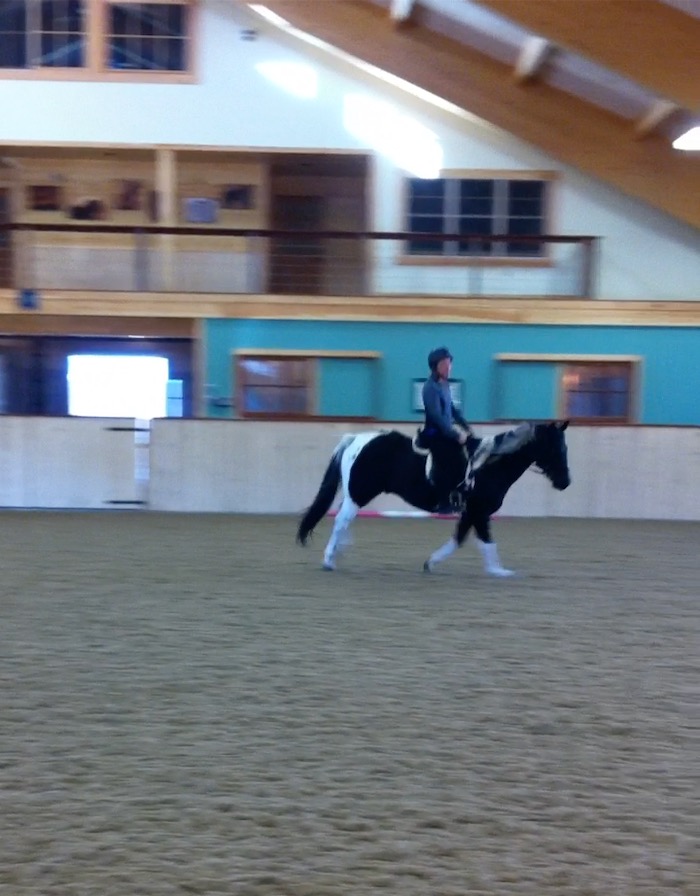
This is not a balanced way to travel, and after a few strides, Tonka got out-of-sync, his back sank, he threw out his leading leg and broke to the trot.
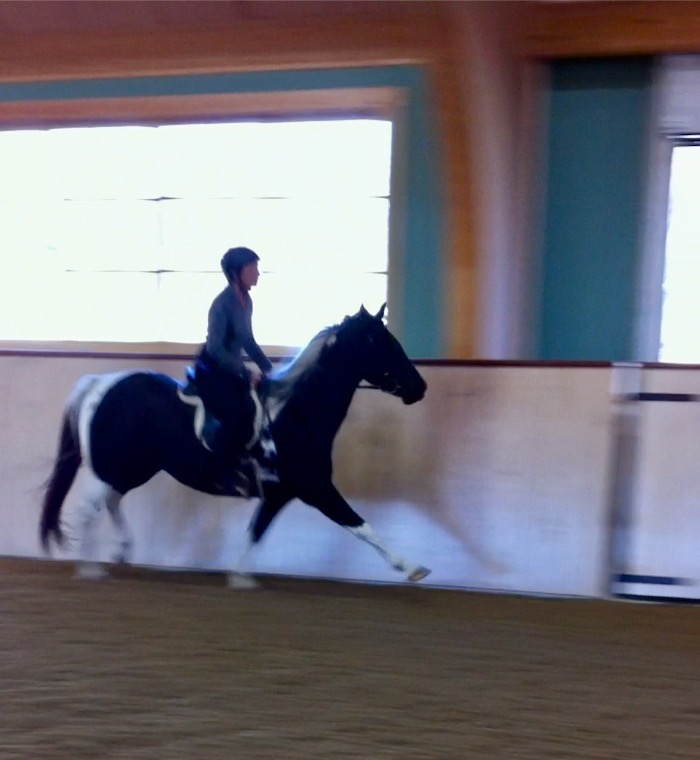
This didn’t concern me. I bought him to be my trail horse which meant we’d mostly be going at a walk. But then we started doing other things. The trot work got lovely.
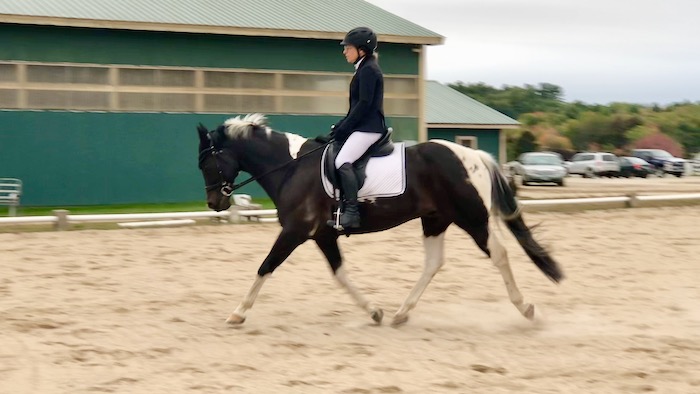
The canter has remained problematic. We’ve had multiple veterinarian checks. We’ve addressed sacroiliac issues, neck soreness and minor arthritis in the left hock. I’ve built up Tonka’s muscles with hill work and gymnastic exercises. Despite that, the canter has remained on the forehand. It’s not just in the ring. Even out in a field Tonka goes like this.
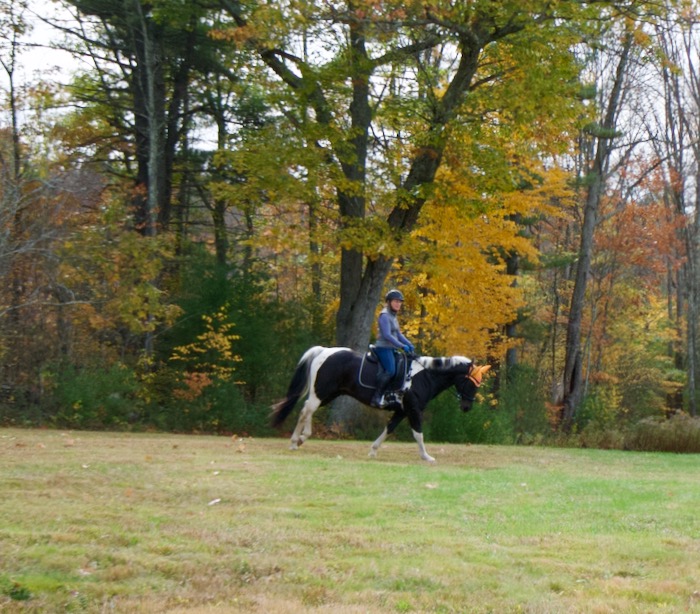
Sometimes he gets discombobulated and throws out that leading leg like he did when I rode him the first time.
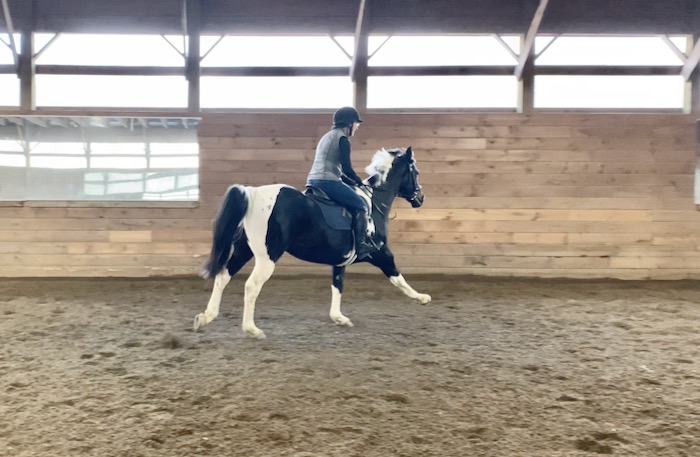
To figure out what was going on, I watched how Tonka travels at liberty. It was obvious that he can bend those hocks and not rely on the leading front leg for balance! However, on his own, Tonka either does this yee-haw canter or he trots. He doesn’t do the sort of relaxed and balanced canter that I’d like to sit on. What I wanted from him wasn’t naturally in his movement repertoire.
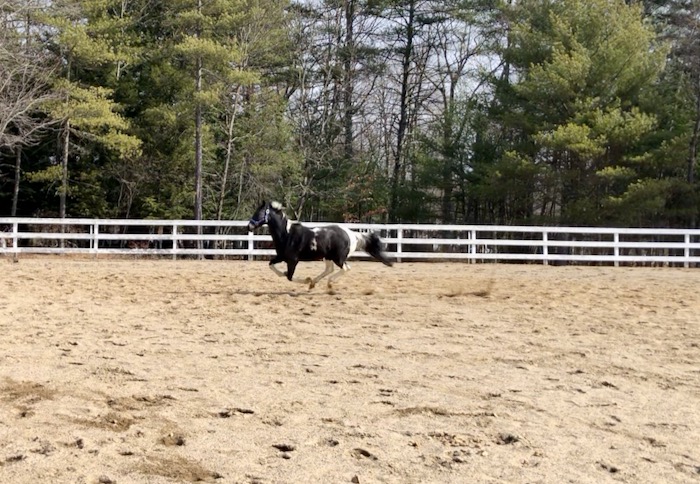
Over the years, Tonka’s under-saddle canter has improved but I haven’t been able to keep him motivated to go rounder and more supple across the top-line from poll to tail. (Not only is that way of going required in dressage, but it’s better for his long-term soundness under saddle.)
I kind of know how he feels. These days I’ve been forcing myself to do yoga via YouTube. I do the bare minimum as directed by the video. Once the video is over, not even if I promise myself chocolate do I have the motivation to do a downward dog outside of that prescribed time. The canter for Tonka is like yoga for me. He can do it, but he’s not going to offer it unless told to. That said, unlike Tonka, I’ve made the link between yoga and longterm improvement in my posture. I keep doing yoga because I can see the bigger picture of what that exercise leads to. Recently, something like that has occurred in Tonka’s attitude towards the canter.
Jumping gave him a glimpse of the big picture.
Tonka trots into this exercise. The poles are set up so that he does a canter stride immediately before the jump.

That canter has exactly the sort of bounding strides that I’ve been trying to get him to do on the flat. Here he’s doing them tension-free and with all-out eagerness. Also notice that his neck isn’t braced from the underside, but has a soft arc to it.

A pole after the jump keeps Tonka balanced, round and engaged.
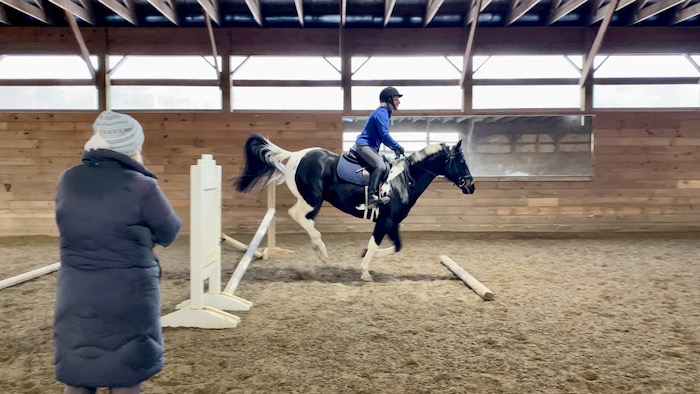
What’s interesting here is that after we finish this exercise and continue around the ring, that Tonka keeps this posture going. Tonka is up at the canter! I can feel his motor revving from behind.
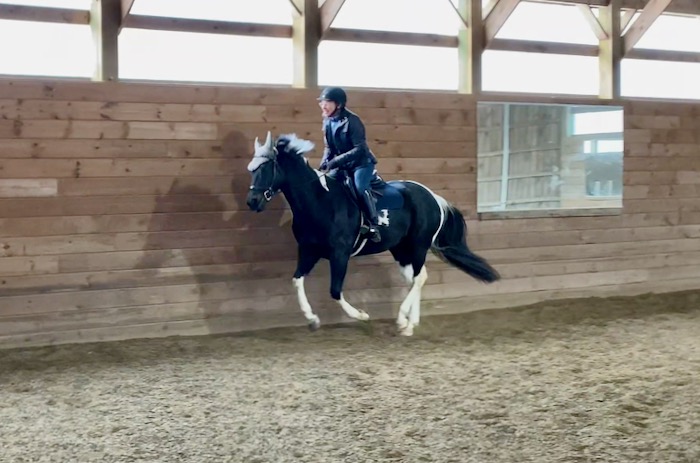
Good training requires us to break down tasks into the smallest of increments and confirm each of those as we build towards a more complex behavior. We trainers know the end goal. Not so for the trainee, who is supposed to be kept happy on the journey by reinforcement at each step. In asking for an up canter, I’ve been asking for athletic effort from Tonka. Tonka asked why bother? I had many answers, but none satisfied him.
How many of us have trained dogs who have suddenly had a leap of understanding so that we could throw our detailed training plan out the window? They have that aha! moment when they get the game and the game is fun. There’s joy all around. That doesn’t often happen with our ridden horses, and for good reason. Those leaps of understanding are often accompanied by real leaps! Thinking animals try out all sorts of behaviors to see what’s right. Dogs are encouraged to be wildly enthusiastic. A dog having zoomies is fun to watch, but you wouldn’t want to be sitting on them.
Instead of looking for leaps of understanding, we riders are more likely to tell our horses what to do and insist that they comply. The horse might not be bursting with enthusiasm about what we ask of them, but as long as they’re sound and willing, that’s okay. This keeps everyone safe. There are benefits to having a calm and compliant mount.
Tonka’s canter, though, didn’t meet my minimum standard of willing. I had to push for it. Tonka is an amenable horse. That he didn’t want to canter in a way that I’d been trying to work him towards for years was frustrating and worrisome. I’d rewarded him for the good canter strides with soft hands, scratches, cookies and rest breaks. None of that created a spark. Recently jumping gave us a breakthrough – as if there was finally a reason for cantering that mattered to him. Tonka had a leap of understanding: that a bounding, balanced canter is part of the game of flying. If I move like that, then I can do this!
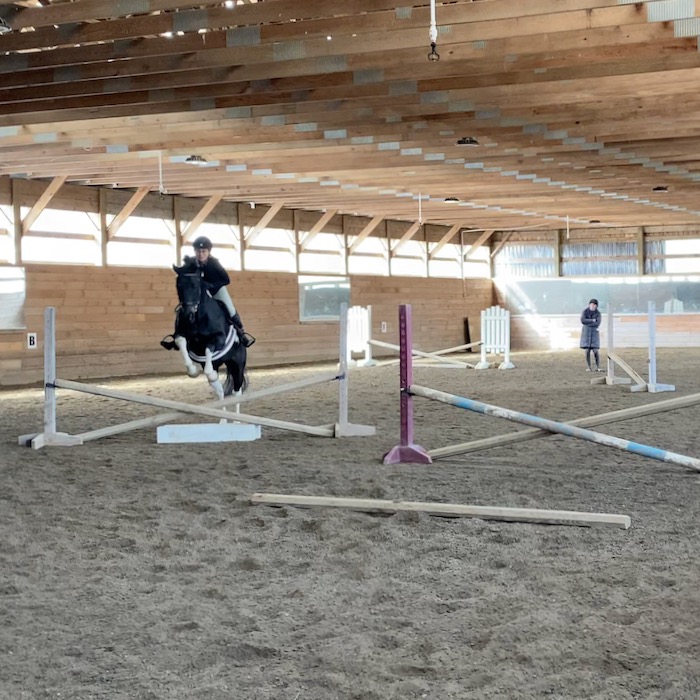
Humans aren’t the only ones who benefit from understanding the why behind what we do. Even horses perform better when they can see the big picture.
What are you working on with your animal (horse or other!) that you’re stuck at? Maybe there’s a way to help them to make that leap of understanding. Let’s talk about it.


Length of stride at canter is a big one for me right now, specifically getting a horse to use a bigger or smaller stride. Always love the photos of Tonka jumping!
Having the ability to accordion in and out is a more advanced level of riding! It’s so much fun when you get it.
We’re working on on lightness of cues. The horse I’m riding now is a combination of slow-ish to respond and stoic which makes it easy to get ‘louder’ than I should without knowing it. I’m learning that he’s actually shocking light to the legs and seat if I wait for him to respond and go lighter on the cues.
Great observation. Even the placid horses can be happily responsive, but it’s a challenge to get it.